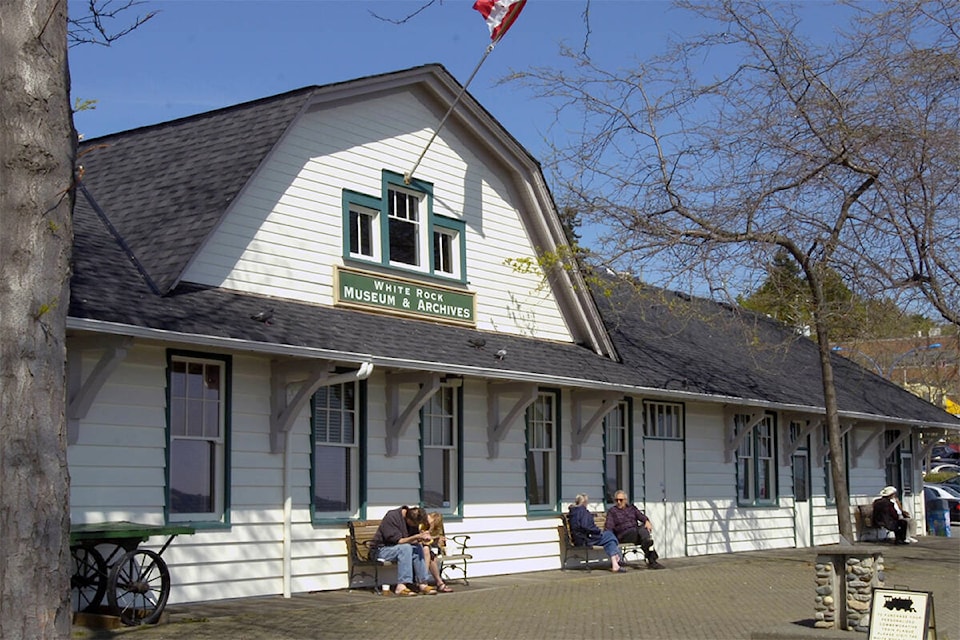For those seeking a reminder of the history of the community’s involvement in both the First World War (1914-1918) and the Second World War (1939-1945) – or for students discovering the history for the first time – White Rock Museum and Archives’ Lest We Forget: White Rock During The War Years is well worth a visit.
The exhibit combines photograph and text panels with display case artifacts – ranging from military and nursing uniforms to ration books and medals – from the museum’s collection.
But, noting the annual nature of the show, curator Charlene Garvey points out that it’s an ever-evolving display, particularly as more historic materials pertaining to those times come to light.
The best – including more completely developed narratives of White Rock residents’ service in different aspects of the wars – may be to come, she said, particularly once the impacts of the pandemic begin to taper off.
“This is my second go-round,” she said. “Essentially it is much the same show, but we are beginning to do some new things, and there should be much more new information next year.”
She notes for instance that Ottawa has unsealed military records for those who served and died overseas.
“Now that they’re available, we can spend more time doing research; tracking their movements,” she said. “We’re wanting to do more story-telling, rather than simply saying this is a photo of this soldier, ‘over there,’doing this or that.
“There are some more in-depth stories we want to share – for instance we have a lot of material now on Helen Vivian Petrie, who was a nursing sister during the First World War.”
Garvey said she’d like the show to offer a better representation of White Rock women and their service during the wars – both on the home front and overseas.
“We have this beautiful uniform from a woman we want to do more research on – she was in the RCAF and she was an electrician, so obviously she was doing some interesting things that were not all that common for women to be involved in at the time.”
Accurately representing the times also means including some ephemera in the current show from German forces during the Second World War, much of which was brought back to White Rock as souvenirs by returning veterans.
“I do put out some Nazi stuff – it’s controversial with some people, but I feel it’s important to see that to understand the era,” she said.
Garvey said she is also contemplating putting out a request to surviving relatives for more materials – including photographs – relating to the wartime service of people who had lived in White Rock during the wars.
One new aspect of the current show – and the Museum’s current outreach to the public – highlights the service of two of the city’s better known veterans, Earl Barge and Walter ‘Punch’ Thompson.
The large-scale posters – which were funded by an Arts and Culture grant from the city – are positioned in uptown White Rock and outside the museum this year, Garvey said.
Barge – well known in the community, latterly, for his family’s hardware, dry goods and grocery businesses – had joined the Canadian Expeditionary Force in 1915, a few months after his 18th birthday.
Wounded at Vimy Ridge in France in 1917, in the lead up to the famous Canadian offensive on the Western Front, he was subsequently discharged in early 1918 as medically unfit for service.
Thompson, in later years a lawyer and politician, earned the Distinguished Flying Cross and Bar with the RAF’s Bomber Command during the Second World War.
Formerly a popular champion athlete in White Rock, he joined the RCAF in 1941 and eventually became part of the RAF’s elite Pathfinder Force, charged with marking enemy targets for ensuing waves of bombers.
Also providing added human dimension to the current exhibit are letters home from those serving overseas during the Second World War.
“The Semiahmoo Sun (the local newspaper of record at the time) asked families to contribute letters for publication during the war and we have a number of those,” Garvey said.
Lest We Forget: White Rock During The War Years continues until Nov. 14 at the museum, at 14970 Marine Dr. (the historic 1912 train station at the waterfront).
alex.browne@peacearchnews.com
Like us on Facebook and follow us on Twitter
